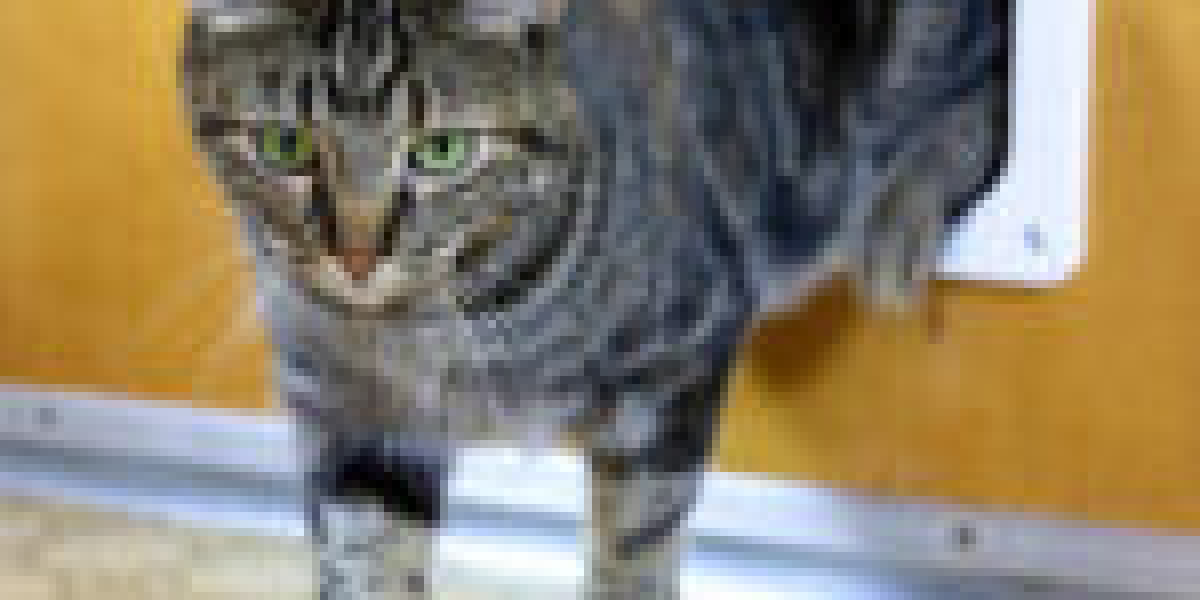The Ultimate Guide to Cat Flap Replacement: Why, When, and How
As a cat owner, it's necessary to provide your feline good friend with a comfortable and hassle-free cat flap installation quote method to enter and leave your home. A cat flap, also called a cat door, is an easy and effective option that allows your cat to come and go as it pleases. However, like any other family product, cat flaps can wear gradually, needing replacement. In this article, we'll check out the reasons that cat flap replacement is necessary, the indications that show it's time for a new one, and a detailed guide on how to replace a cat flap.
Why Replace a Cat Flap?

There are several reasons cat flap replacement is essential:
- Wear and tear: Cat flaps undergo constant usage, which can result in wear and tear on the hinges, seals, and other moving parts.
- Weather condition damage: Exposure to rain, snow, and extreme temperatures can cause the cat flap to degrade, leading to water leakages and drafts.
- Insect control: Old or damaged cat flaps can provide an entry point for unwanted bugs, such as rodents, birds, or pests.
- Energy performance: A brand-new cat flap can help reduce heat loss and energy consumption, making your home more energy-efficient.
- Improved security: Modern cat flaps frequently feature innovative security features, such as lockable doors and magnetic seals, to avoid unapproved entry.
Signs that Indicate it's Time for a New Cat Flap
If you observe any of the following indications, it's likely that your cat flap requires to be replaced:
- Leaks and drafts: If you notice water or air leaking through the cat flap, it's time to consider a brand-new one.
- Problem opening or closing: If the cat flap ends up being stuck or hard to open or close, it's likely that the hinges or seals are worn.
- Sound: If the cat flap makes extreme noise when opening or closing, it might be an indication that the moving parts are worn out.
- Pest invasion: If you notice pests entering your home through the cat flap, it's time to change it with a new one.
How to Replace a Cat Flap: A Step-by-Step Guide
Replacing a cat flap is a relatively basic DIY task that can be completed with fundamental tools and products. Here's a step-by-step guide:
Materials needed:
- A new cat flap
- Screwdriver or drill
- Measuring tape
- Pencil or marker
- Wood screws (if necessary)
- Weatherstripping (if required)
Instructions:

- Measure the existing cat flap: Measure the width and height of the existing cat flap to ensure that the brand-new one fits perfectly.
- Eliminate the old cat flap: Use a screwdriver or drill to get rid of the screws holding the old safety cat flap installation (Read the Full Content) flap in location. Carefully pry the 24/7 cat flap installer flap out of the pet door installation or wall.
- Clean the area: Clean the location around the old cat flap to eliminate any debris or dirt.
- Mark the position of the brand-new cat flap: Use a pencil or marker to mark the position of the new cat flap on the door or wall.
- Drill pilot holes: Drill pilot holes for the screws that will hold the new cat flap in place.
- Install the new cat flap: Insert the brand-new cat flap into the door or wall and screw it into location.
- Include weatherstripping (if required): Apply weatherstripping around the edges of the cat flap to prevent drafts and leakages.
Tips and Tricks:
- Choose a cat flap that appropriates for your cat's size and type.
- Consider a cat flap with innovative security features, such as lockable doors and magnetic seals.
- Use a level to make sure that the cat flap is set up directly and level.
- Evaluate the cat flap before installing it to make sure that it works smoothly and quietly.
Frequently Asked Questions:
- Q: How long does it take to replace a cat flap?A: The time it takes to replace a cat flap depends upon the complexity of the task and the individual's DIY skills. Usually, it takes about 30 minutes to an hour to complete the job.
- Q: Can I replace a cat flap myself?A: Yes, changing a cat flap is a fairly basic DIY project that can be finished with standard tools and materials. However, if you're not comfy with DIY projects, it's suggested to employ a professional pet door installer.
- Q: How typically should I change my cat flap?A: The frequency of replacing a cat flap depends upon use and weather condition conditions. Typically, a cat flap ought to be changed every 5-7 years.
- Q: What are the advantages of a brand-new cat flap?A: A new cat flap can enhance energy effectiveness, security, and comfort for your cat. It can also minimize noise and prevent pest infestation.
Conclusion:
Replacing a cat flap is a simple and essential job that can enhance the convenience and benefit of your feline friend. By following the detailed guide described in this short article, you can quickly replace your old cat flap with a brand-new one. Keep in mind to select a cat flap that is ideal for your cat's size and type, and think about innovative security functions to prevent unapproved entry.
Additional Resources:
- Best Cat Flaps for Energy Efficiency: [link]
- How to Choose the Right Cat Flap: [link]
- DIY Cat Flap Installation Tips: [link]
By providing your cat with a comfortable and practical method to get in and exit your home, you can improve its overall health and joy. Remember to replace your cat flap every 5-7 years to make sure that it stays in great working condition.







